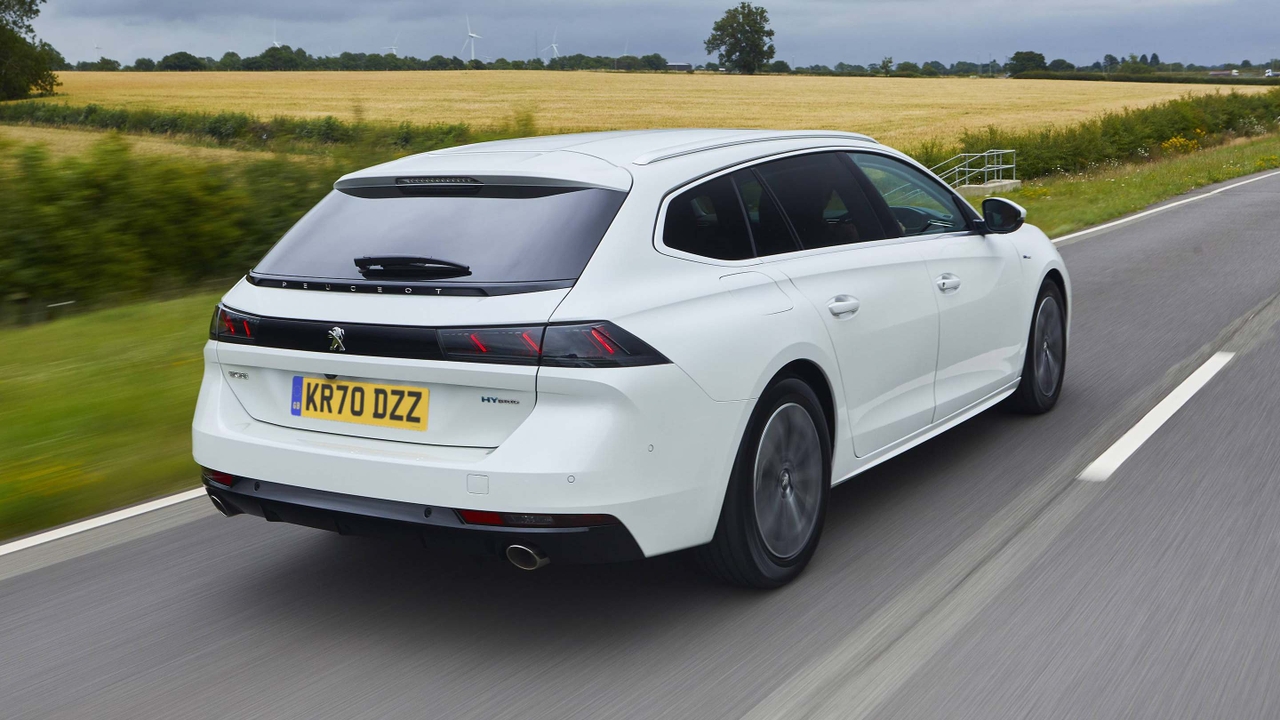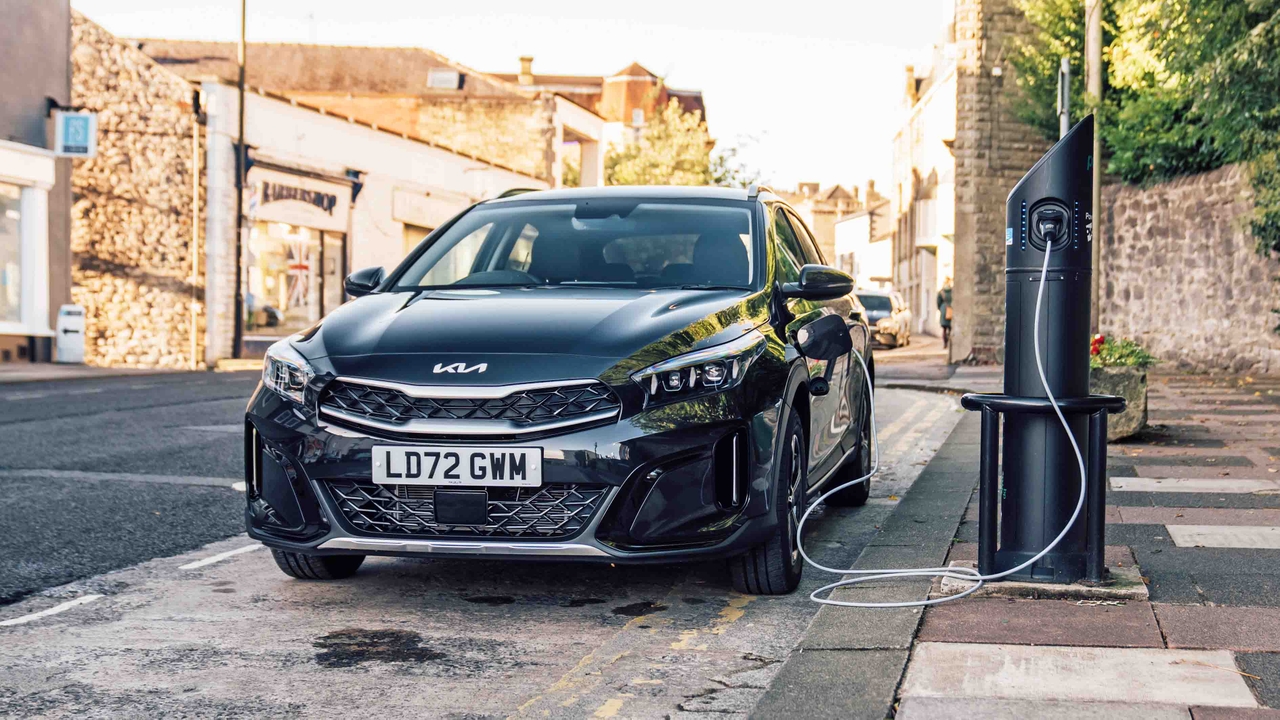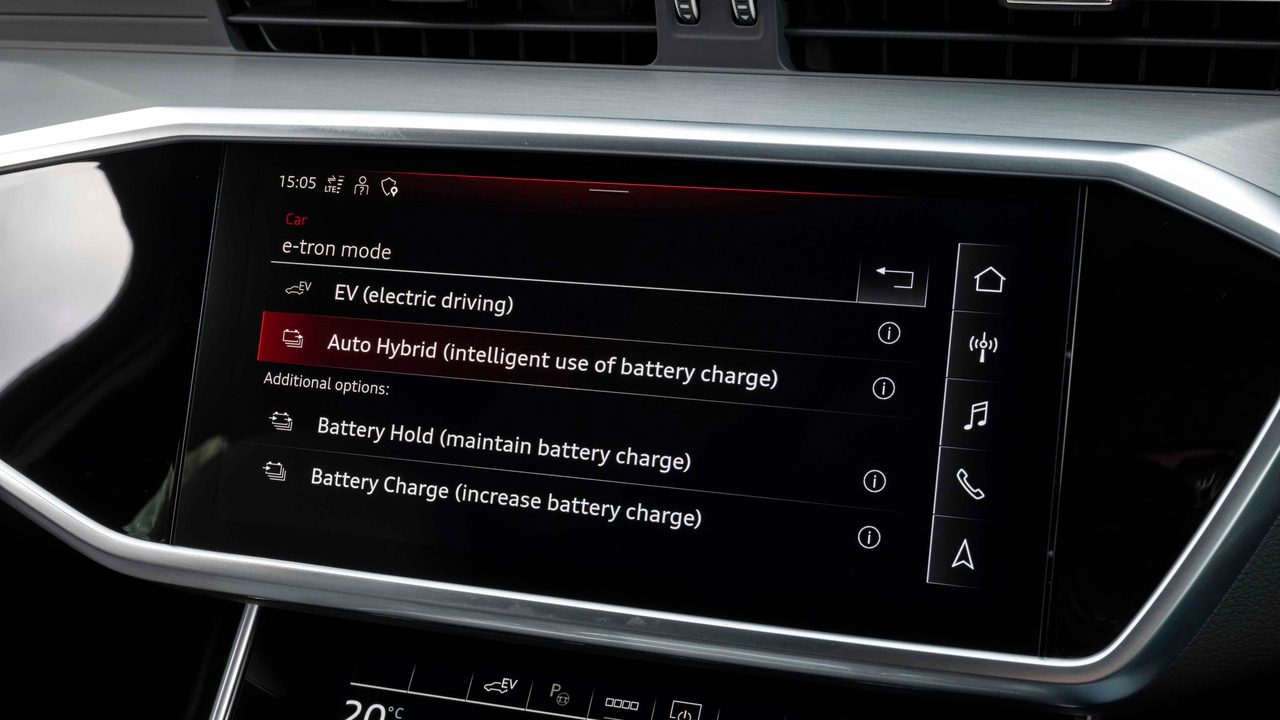Hybrid cars are more popular than ever. We explain what a plug-in hybrid is, plus the advantages and disadvantages of choosing a PHEV for your next car.
Plug-in hybrid electric vehicles (PHEVs) are a great midway point between purely engine-powered cars and purely electric cars. They’re ideal if you want to dip your toe into driving and living with an EV, with a familiar engine on hand as backup for longer journeys.
PHEVs have a battery that recharges from mains electricity, plus a petrol or diesel engine. Used as intended, they can hugely reduce your fuel bills – official fuel consumption figures of over 200mpg aren’t uncommon.
Whether you’re looking to save money on fuel versus a conventional car, use it as a stepping stone to a fully electric car, or drive on electric power without the range anxiety, a used plug-in hybrid makes an excellent purchase. To make sure a PHEV is right for you, we’ve listed pros and cons, and we’ve made it easy to search for your next car.
What is a plug-in hybrid electric vehicle (PHEV)?
A plug-in hybrid electric vehicle (PHEV) is a vehicle with a battery pack that can be recharged in addition to its regular fuel-powered engine. This combination is designed to give the ideal balance between economy and performance.
Many plug-in hybrid cars manage somewhere between 25 and 50 miles of electric driving on a full battery charge. That might not sound like a lot but, when the average UK commute is less than 30 miles, you could do a large proportion of your weekly driving without using a drop of fuel – as long as you plug it in to recharge, of course.

More modern plug-in hybrid engines are now offering increased range figures. For example, the new Golf eHybrid achieves up to 88 miles of electric driving from a fully charged battery – plenty for most drivers to only need the engine occasionally.
The petrol or diesel engine is there to achieve longer journeys and in some cases there to help charge the batteries when driving.
What is the difference between hybrid and plug-in hybrid cars?
These two types of hybrid cars both use an engine, plus an electric motor and a battery. The difference between hybrid and plug-in hybrid cars is generally the size of the battery. Hybrids (like the Toyota Prius) have quite small batteries, typically 1-2kWh in size. They can only drive a couple of miles on electric power at a time, but are designed to assist the engine and make it more economical. Around town, some hybrids like the Toyota Yaris and Renault Clio can spend a lot of time running on electric power. At higher speeds, the engine will be doing the lion’s share of the work. You might hear these cars being referred to as ‘full’ or ‘self-charging’ hybrids.
Plug-in hybrid batteries are much bigger, typically more than 10kWh. Because they’re bigger, the batteries need topping up from the electricity grid. But the flipside is a much longer electric range. If you’re on a reasonable home electricity tariff or can charge cheaply out and about, a plug-in hybrid can be much cheaper to run than a conventional hybrid.
How do plug-in hybrid cars work?
Most plug-in hybrid cars have multiple drive modes. Often, you can drive in all-electric mode (if there’s enough charge in the battery), or you can choose to save the electric power for later in the journey – if you’re driving into a city, for example. Alternatively, you can let the car’s computer decide which power source to use. The cleverest PHEVs can use data from the sat nav to work out when to use electric or engine power.
How to charge a plug-in hybrid car

Charging at home is the easiest way to fill up a plug-in hybrid’s battery. Most PHEVs accept a charging rate of 7kW, which is what you’ll get from a home wallbox. That’s usually enough to fully charge a PHEV’s battery in three or four hours. Don’t want to shell out for a wallbox? You can use a standard three-pin plug socket, which should still have the battery fully topped up overnight.
Not many PHEVs have fast-charging capability – a growing number of new models do, but many existing models don’t – so there’s not a huge amount of point plugging in at a public DC fast-charger. You can, and the car will limit the power going in, but it’ll still take a couple of hours to get to 80% charge. What’s more, public charge points are typically much more expensive than charging at home – so on long journeys it might be more cost-effective to simply use the engine.
What happens if you don’t charge a plug-in hybrid?
If you don’t plug in a PHEV car the car will simply run using the petrol or diesel engine.
Although it will run as normal, you will find a significant change in the vehicle’s economy and MPG. The electric components are designed to supplement the combustion engines and help the vehicle achieve a better fuel economy.
Don’t forget that the batteries in a plug-in hybrid can be very heavy. On long runs using just the engine, you’ll be lugging the battery pack around – so you might get a lower fuel economy figure than you would in an equivalent petrol or diesel car.
Does a plug-in hybrid recharge while driving?

Some PHEV models are fitted with technology that can place the car into a ‘charging’ driving mode, where the internal combustion engine will begin to charge the car's batteries. This is only really achieved around town with lots of braking events – on the open road the engine will struggle to put any juice into the battery.
It is important to note that optimal charging is achieved by charging the car at an electric point.
Where can I charge my plug-in hybrid?
There are plenty of places to charge your plug-in hybrid – they use the same connections as fully electric cars, so you can pull in to any compatible charger. Here are just a few places you can recharge a plug-in hybrid:
- At home
- Supermarkets
- Gyms and hotels (usually for members or guests only)
- Destinations
- Your workplace (if chargers are fitted and you’re allowed to use them)
- Motorway service stations
Many supermarkets have discounted charging costs as a reward for shopping with them, but charging at home will generally be the cheapest and easiest place – if you can get the charging cable from your car to your home without trailing across the pavement. Motorway service station charging points will be the most expensive, often costing several times as much as a home charge.
How long does a plug-in hybrid take to charge?
This depends on how large the battery is, how full it is and, to an extent, where you’re charging. A typical 7kW home wallbox charger will fully recharge a medium-sized battery in a couple of hours. As mentioned, you can recharge from a conventional plug socket, too, but these sockets are about half as powerful so will take a few hours to fully top-up the battery.

The UK now has a huge number of fast and rapid chargers, but these are primarily aimed at electric cars. Many plug-in hybrids can only charge at 7kW, so plugging in to a 50kW fast-charger won’t top up the battery any quicker than recharging from a home wallbox.
If you don’t want to wait for a fully electric car with a larger battery pack to recharge, a plug-in hybrid could be a great option.
What are the advantages of a plug-in hybrid?
There are many advantages when it comes to having a PHEV. The main benefits you will see are:
- Better fuel economy and reduced fuel bills if used properly
- Electric-only driving for short distances
- Often quick acceleration
- Lower quoted CO2 emissions give tax cuts to company-car drivers
- No range anxiety with a conventional engine for longer journeys
- Strong residual values as demand for hybrid vehicles increases
- Long battery warranty
What are the disadvantages of plug-in hybrids?
Plug-in hybrids won’t suit everyone, and there are a few things to consider if you’re looking at PHEVs:
- They need plugging in for the best fuel economy
- They aren’t the most economical choice for long distances
- Extra weight can blunt handling
- Battery may take up passenger or boot space
- Having to remember to recharge the battery and fill up with fuel
- From April 2025, there’s no discount in road tax for hybrids
Which cars are plug-in hybrids?
A huge number of carmakers offer plug-in hybrid cars now, from Audi and BMW to Ford, Skoda and Hyundai. You can get hatchbacks, SUVs, saloons and estate with a mix of fuel and battery power. Search our huge range of used plug-in hybrid cars for sale.
Is it worth buying a plug-in hybrid electric vehicle?
Buying a PHEV is a great way to reduce your fuel bills and to be more environmentally friendly.
While they aren’t quite as cost-effective as a fully electric vehicle, they are the ideal choice for anyone with a regular commute or who often does short journeys.
The practicality of having a regular engine to supplement the electric motors means a PHEV is a great introduction into the world of hybrid and electric vehicles.

































